
Hex Mayflies
Hexagenia limbata
The famous nocturnal Hex hatch of the Midwest (and a few other lucky locations) stirs to the surface mythically large brown trout that only touch streamers for the rest of the year.


Neoleptophlebia Mayfly Nymph Pictures
This nymph keys pretty well to Neoleptophlebia. Under the microscope, the fork on the first gill is more symmetrical than it looks in the picture here. Following the species key in Jacobus et al. (2014), the lack of tusks on the head or postero-lateral spines on segment 8 leads to adoptiva or heteronea, but both refer to a 3-segmented labial palp as a key characteristic, and this one only seems to have two segments, just like another, different-looking specimen from the same sample. So I'm stuck.
I thought the end of the abdomen of this one was damaged during capture and transport, but I photographed it anyway because it looked different from the others. However, it became clear under the microscope that it was actually just mid-way through molting and the abdomen was intact underneath. I got a couple nice microscope photos showing that. The pattern of markings on the abdomen is still distinctive compared to the other specimen, which was more representative of a common nymph in my sample. This one was unique.
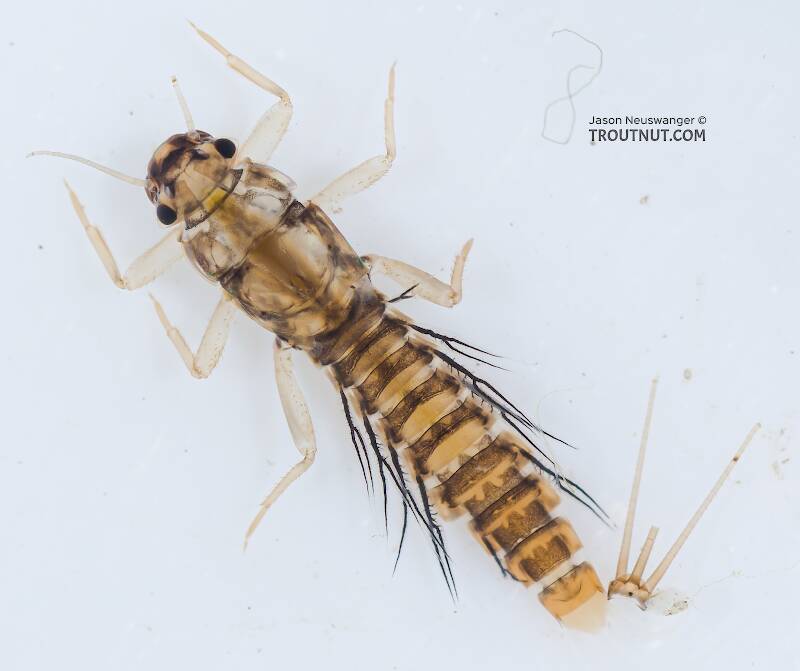
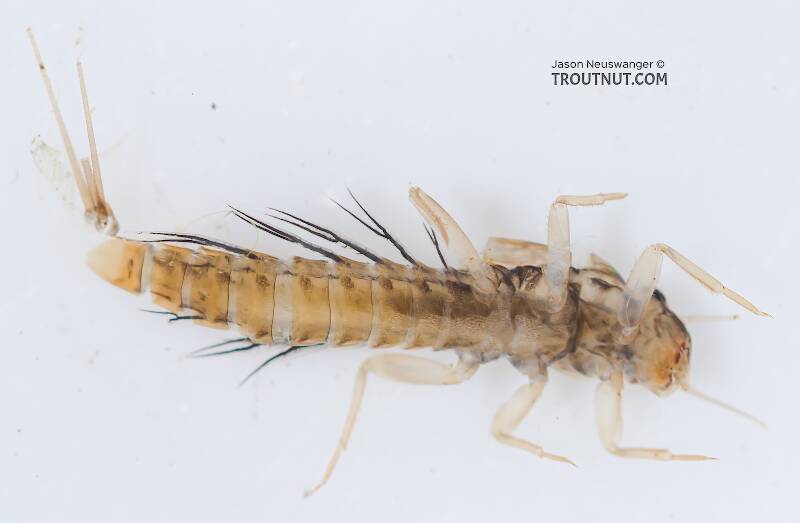
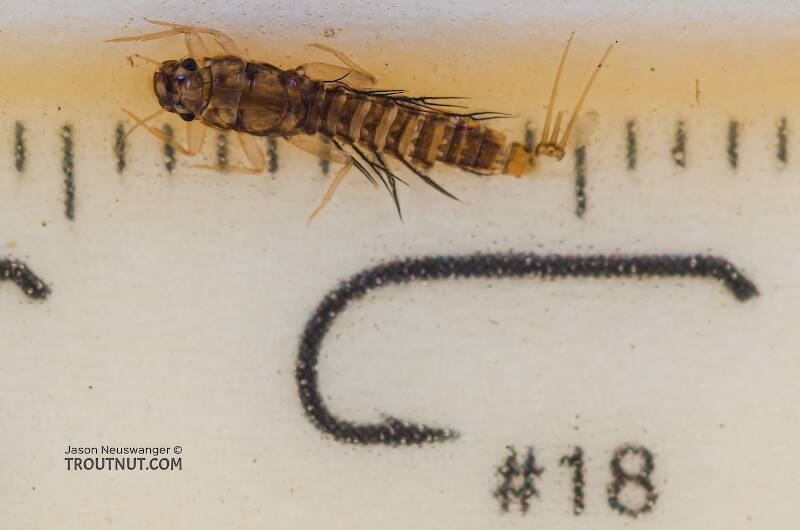
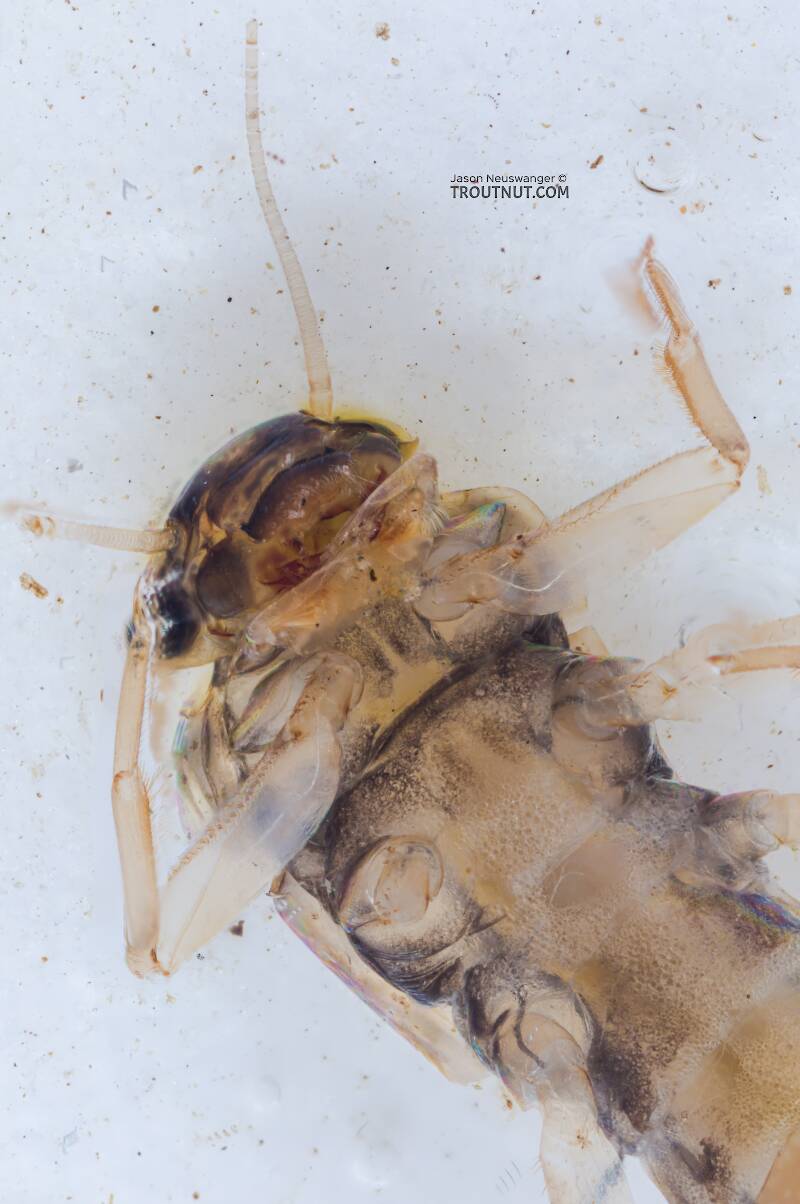
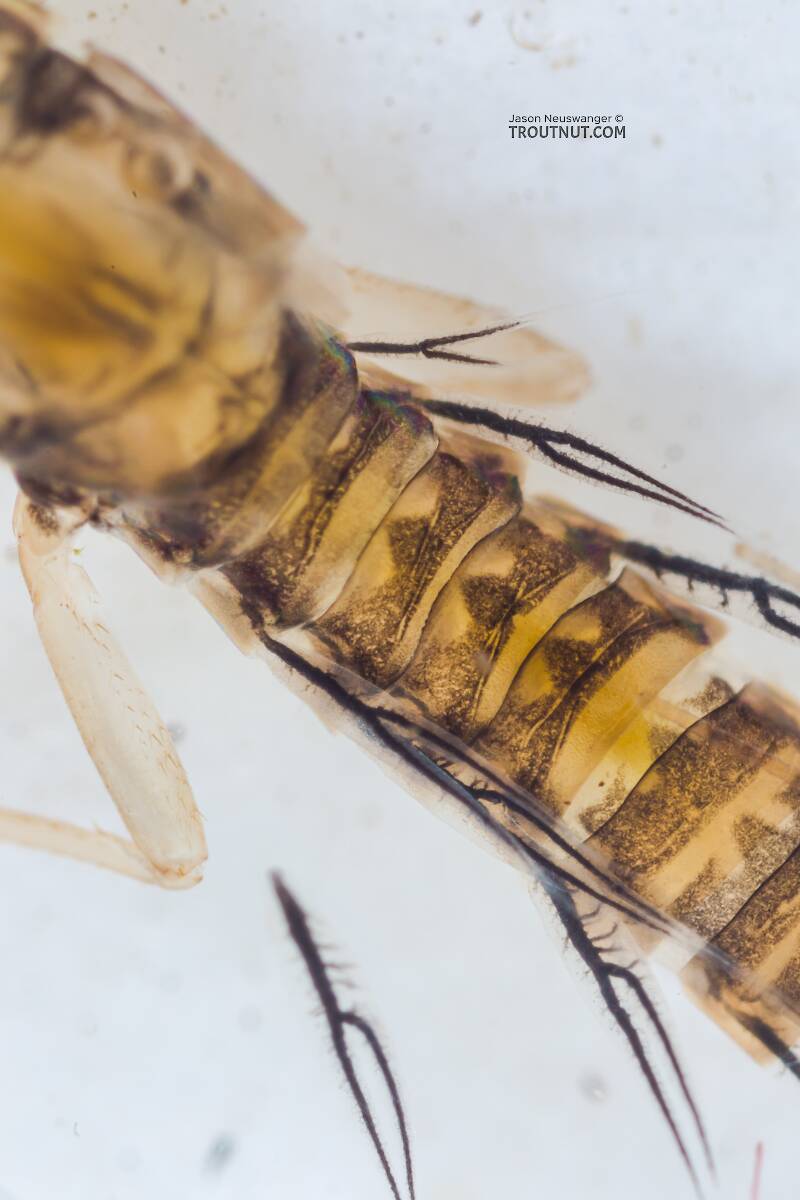
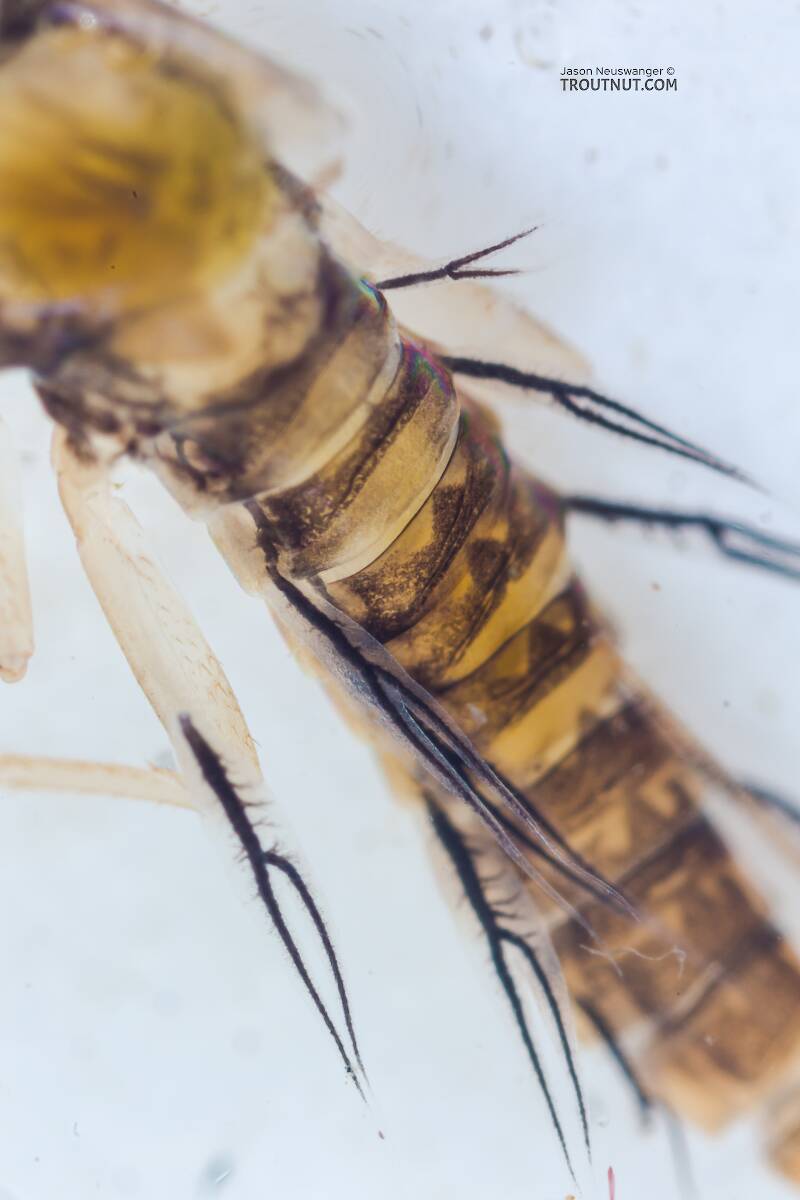
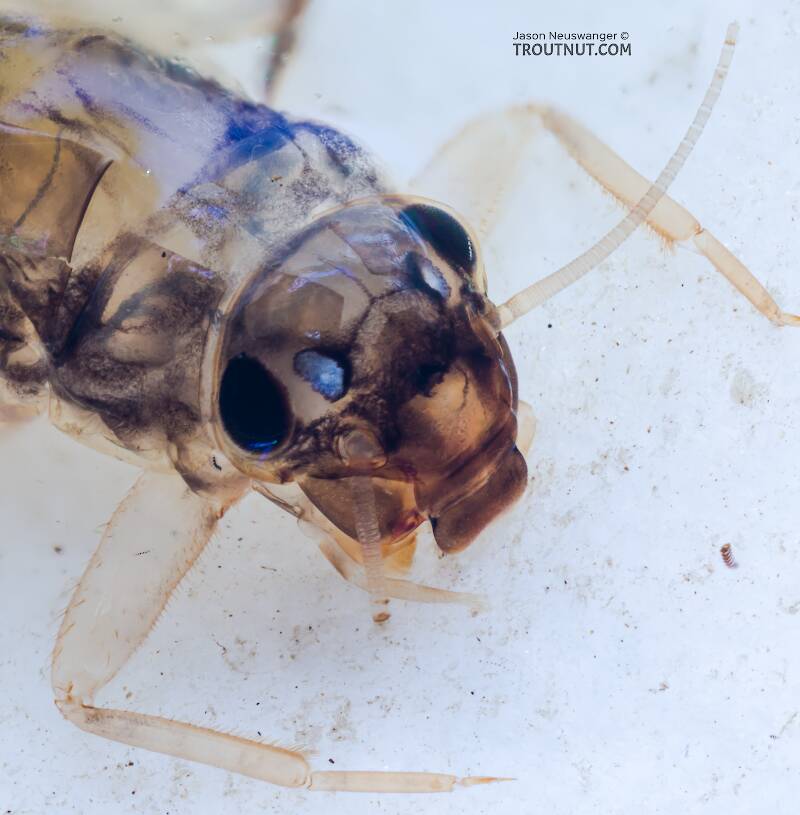
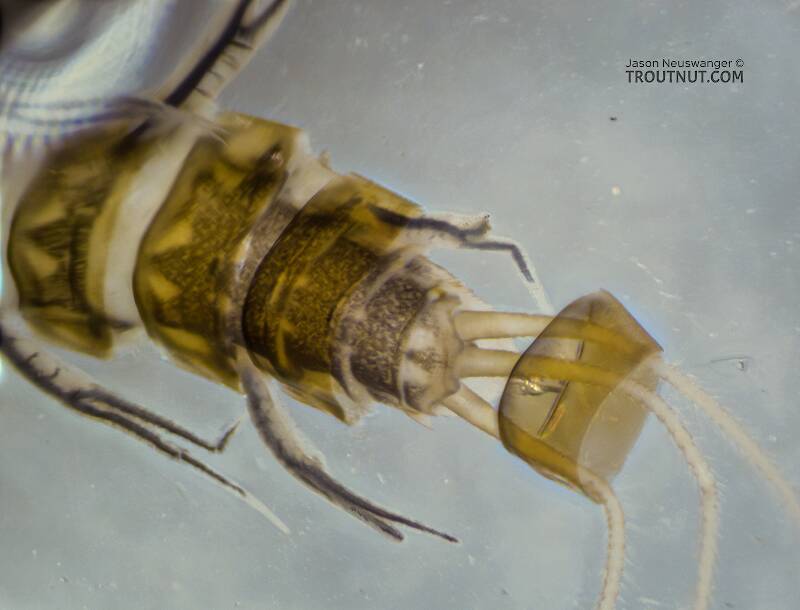
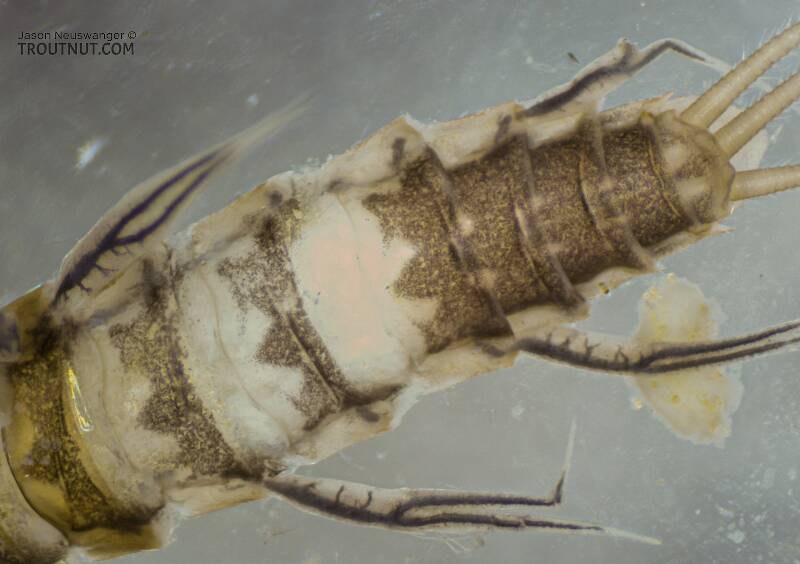
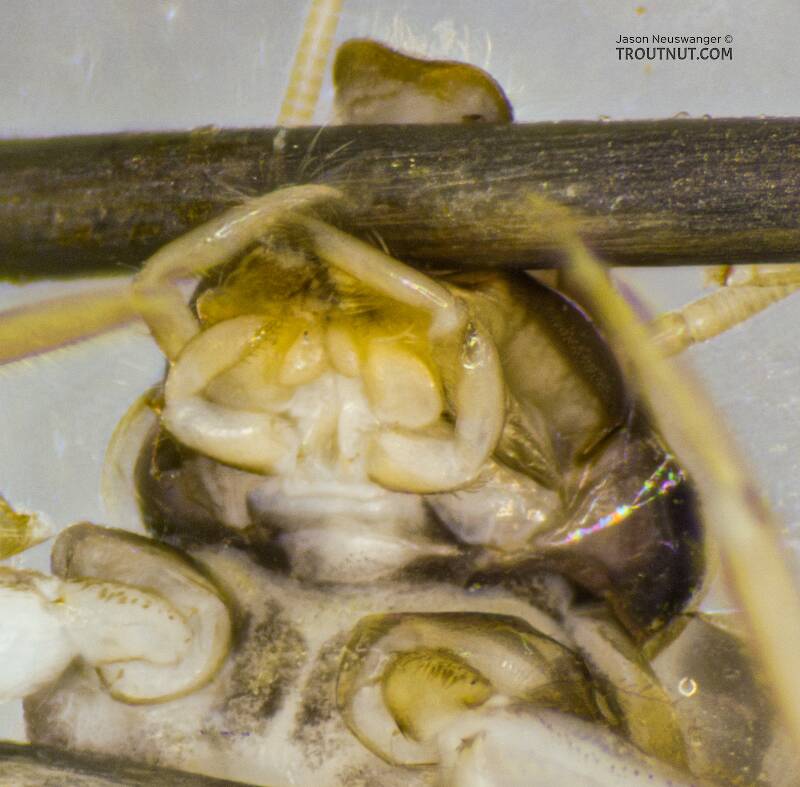
This mayfly was collected from the Yakima River in Washington on February 18th, 2023 and added to Troutnut.com by Troutnut on February 21st, 2023.
Start a Discussion of Nymph
References
- Jacobus, L. M., Wiersema, N.A., and Webb, J.M. 2014. Identification of Far Northern and Western North American Mayfly Larvae (Insecta: Ephemeroptera), North of Mexico; Version 2. Joint Aquatic Science meeting, Portland, OR. Unpublished workshop manual. 1-176.
Neoleptophlebia Mayfly Nymph Pictures
Collection details
Date: February 18th, 2023
Added to site: February 21st, 2023
Author: Troutnut

